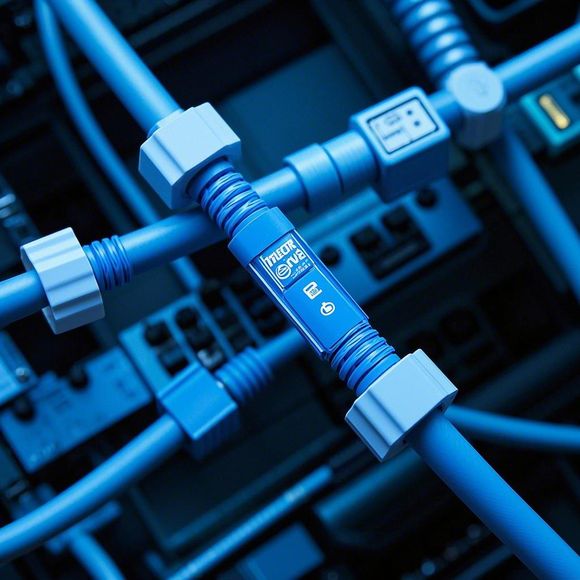Exploring the World of Security and Communication: A Comprehensive Guide to Surveillance Systems
In today's world, security and communication are paramount, and surveillance systems play a crucial role in ensuring both. From homes to businesses, these systems provide a watchful eye, deterring potential threats and aiding in the swift resolution of emergencies. This comprehensive guide delves into the various types of surveillance systems, from the traditional CCTV cameras to the more advanced IP-based systems. We'll explore the benefits, features, and technologies that make these systems effective, as well as the legal and ethical considerations surrounding their use. Whether you're looking to secure your property, protect your employees, or enhance your overall security posture, this guide will provide you with the information you need to make informed decisions about surveillance systems.
Content:
Hey there! If you're looking to enhance your home or business security while also ensuring clear and reliable communication, then you've come to the right place. In this guide, we're going to dive into the fascinating world of surveillance and communication systems. Whether you're a homeowner looking to protect your property or an entrepreneur seeking to secure your business, we've got you covered. So, let's get started!
First things first, let's talk about the different types of surveillance systems. You've got your traditional CCTV (Closed-Circuit Television) systems, which are still incredibly popular and effective. These use cameras to capture footage that's sent to a recording device for later viewing. But technology has come a long way, and now we have IP (Internet Protocol) cameras that can stream footage directly to the internet or a local network. This means you can access your camera feeds from anywhere in the world, as long as you have an internet connection.
Speaking of connectivity, we can't talk about surveillance without mentioning the importance of a stable and secure network. That's where network switches and routers come in. These are the unsung heroes of any surveillance setup, ensuring that data is transmitted quickly and safely. When choosing a network device, you want to look for one that can handle the bandwidth required for high-definition video streaming without any hiccups.

Now, let's talk about the brains of the operation: the NVR (Network Video Recorder) or the DVR (Digital Video Recorder). These are the devices that receive and store the video footage from your cameras. NVRs are typically used with IP cameras, while DVRs are more common with CCTV cameras. Both offer various storage options, from internal hard drives to cloud-based solutions, so you can choose the one that best fits your needs.
Of course, no security system is complete without proper access control. We're talking about door locks, gate barriers, and other devices that allow you to control who enters your property. These can be integrated with your surveillance system, providing an extra layer of security and convenience. Imagine being able to remotely unlock your door for a visitor or automatically lock up when you leave, all from your smartphone. Pretty cool, right?
But what if something does go wrong? That's where alarm systems and intercoms come in. Alarm systems can detect intrusions and trigger an alert, while intercoms can allow for two-way communication, so you can talk to someone at your door without having to open it. Combine these with your surveillance system, and you've got a comprehensive security solution that can handle just about anything.
Last but not least, we have to talk about the importance of audio. While video is great for surveillance, being able to hear what's happening can provide additional context and help in situations where visual evidence might not be enough. That's where audio surveillance comes in, whether it's through microphones integrated into cameras or standalone devices.
So, there you have it—a brief overview of the exciting world of security and communication systems. Whether you're looking to protect your home, your business, or your loved ones, these systems offer a range of features and benefits to suit your needs. From basic CCTV setups to advanced IP systems with smart home integration, the possibilities are endless.
Remember, when it comes to security, there's no one-size-fits-all solution. It's important to assess your specific needs and budget, and then choose the right combination of devices and services to create a tailored security solution. And that's where we come in—we're here to help you every step of the way, from planning to installation and beyond.
So, what are you waiting for? Start exploring the world of security and communication systems today, and take the first step towards a safer and more connected environment. Your peace of mind is just a click away!
Content expansion reading:
1、Introduction to Security Communications Systems
2、The Importance of Communication in Ensuring Safeguarding
3、Understanding Different Types and Features of Security Communication Devices
4、The Impact of Technology on Modern Security Systems
5、The Role of Smart Homes in Adding an Extra Layer of Security
6、Choosing the Right Security Communication System for Your Needs
7、Setting Up and Maintaining a Comprehensive Security Network
8、The Importance of Regular Audits and Maintenance for Optimal Performance
9、Emerging Technologies and Future Prospects in Security Communications
10、Navigating Legal and Regulatory Landscapes for Successful Security Systems
11、Building Trust Through Clear Privacy and Data Protection Policies
12、The Integration of AI and Machine Learning in Security Communications
13、Effective Communication Strategies for Escalating Incidents
14、Protecting Against Cyber Threats with Advanced Communication Systems
15、The Role of Emergency Response Teams in Ensuring Timely Action
16、Reducing False Alarms: Techniques to Improve Communication System Accuracy
17、Implementing Robust Firewall and Intrusion Prevention Systems
18、The Connection between Security and Business Continuity Planning
19、Managing User Access and Data Security in a Secure Environment
20、The Power of Multi-Factor Authentication for Enhanced Security
21、Utilizing IoT in Improving Surveillance and Alert Systems

22、The Role of Cloud Services in Storing and Processing Sensitive Information
23、Balancing Privacy with Utility: A Comprehensive Approach to Privacy Management
24、Adaptability in Designing Security Communication Systems to Meet Changing Needs
25、Enhancing User Experience with Voice-Based Command and Control Options
26、Investing in Quality and Reliability: The Significance of High-End Security Equipment
27、The Importance of Regular Training and Certification for Security Professionals
28、Overcoming Challenges with Scalability and Deployment in Security Networks
29、Balancing Efficiency with Security: The Art of Optimal Use of Security Communication Tools
30、Encouraging Collaboration among Industry Leaders for Innovation in Security Communications
31、The Future of Wearable Devices and Their Potential in Boosting Personalized Security
32、The Role of Mobile Security in Ensuring Continuous Access to Information
33、Securing Against Ransomware through Advanced Detection and Response Strategies
34、Enhancing the Resilience of Your Security System against Natural Disasters
35、Leverage Social Media for Real-Time Alerts and Public Safety Notifications
36、The Importance of Transparency and Accountability in Security Communications
37、The Impact of Sustainability Practices on Long-Term Security Systems
38、Creating a Culture of Safety within Workplaces through Strong Security Programs
39、Securing Against Malicious Attacks with Advanced Network Monitoring Techniques
40、The Value of Proactive Analytics in Boosting Security Decision-Making
41、Addressing Cybersecurity Risks by Implementing Robust Network Architectures
42、The Benefits of Automated Solutions in Streamlining Security Communication Processes
43、Enhancing Customer Service with Real-Time Alerts during Disasters or Emergencies
44、Using Blockchain for Enhancing Transparency and Verifiability in Security Systems
45、The Importance of Regular Auditing and Testing for the Longevity of Security Communication Systems
46、The Integration of Artificial Intelligence in Predictive and Preventative Security Analysis
47、The Power of Community-Based Solutions for Addressing Common Security Concerns
48、Fostering a Culture of Safety within Organizations through Open, Honest, and Transparent Communication.
This is a general guideline that could be adapted according to your specific requirements and business context.
Articles related to the knowledge points of this article:
Title: Exploring the Multi-Choice Question Bank for Telecommunications Cables
Is Communication Cable Illegal?
Title: An In-Depth Analysis of the Prices for HYA Cables for Telecommunications